This year we decided to grow Oca...
..why? Well apparently it crops like potatoes and is described as
Almost too good to be true isn't it? Yep! Its a good crop. But that crop that has no pests, needs no work and crops reliably and heavily is guarded by dragons and unicorns and the seed is only available by passining into Narnia!
So in March we ordered some tubers in red....
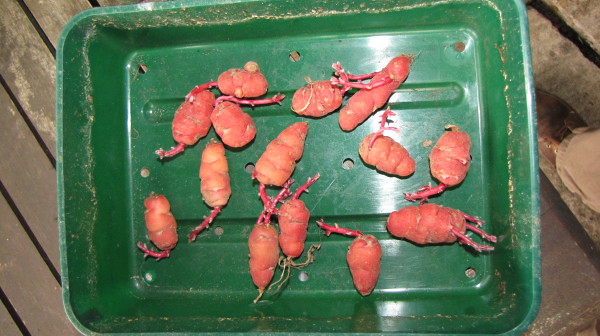
Red oca by British Red, on Flickr
and Orange

Orange Oca by British Red, on Flickr
These were chitted (sprouted) in seed trays in a cool dark shed and planted a foot apart when the risk of frost was past.
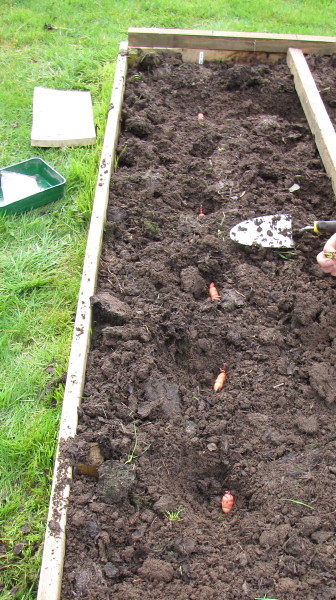
Planted oca by British Red, on Flickr
Three weeks later, the first growth showed
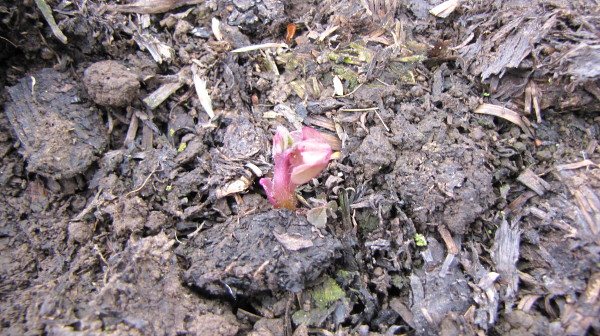
Oca first growth by British Red, on Flickr
a couple of weeks after that, leaves appeared...sort of clover / wood sorrel in appearance
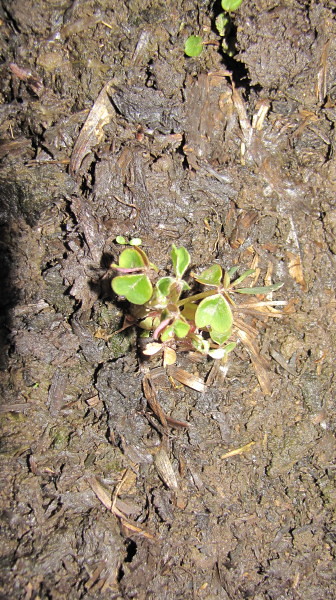
Oca 22-4 by British Red, on Flickr
A month later....not much bigger!

Oca 25-05 by British Red, on Flickr
About June they got going
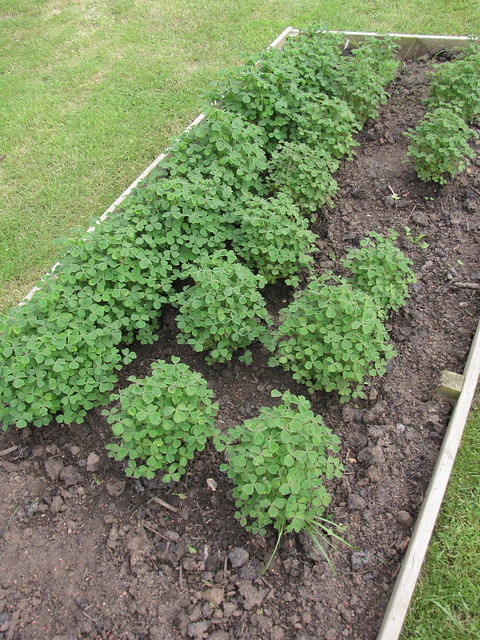
Oca PLants by British Red, on Flickr
And just kept growing - but never got above a foot tall...just bushier.
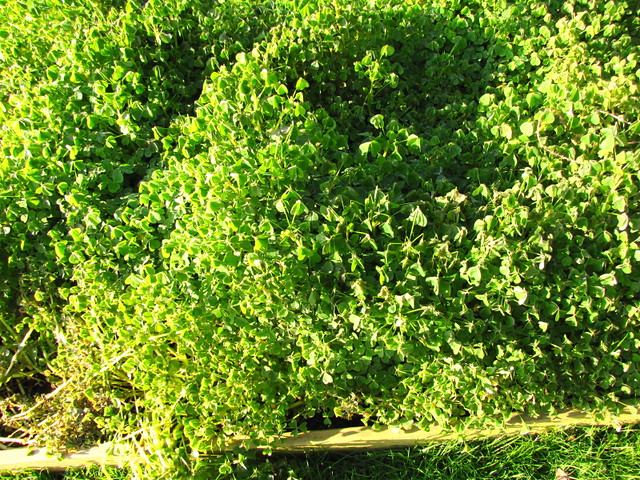
Oca November by British Red, on Flickr
The plant needs to be frost killed before harvesting as it pulls its growth back into the tubers. Our first hard frost was the last day of November. The plants need to be left for a fortnight after this.
Two weeks later - this was how they looked
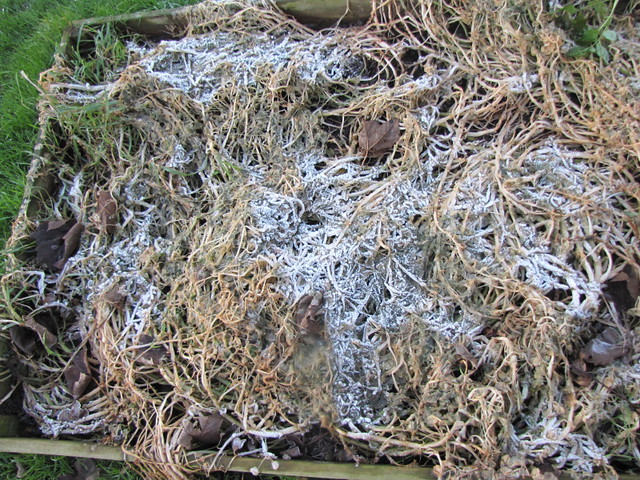
Frosted Oca by British Red, on Flickr
The tubers are quite shallow and in soft, unfrozen soil can be lifted by hand. The tubers are quite prolific
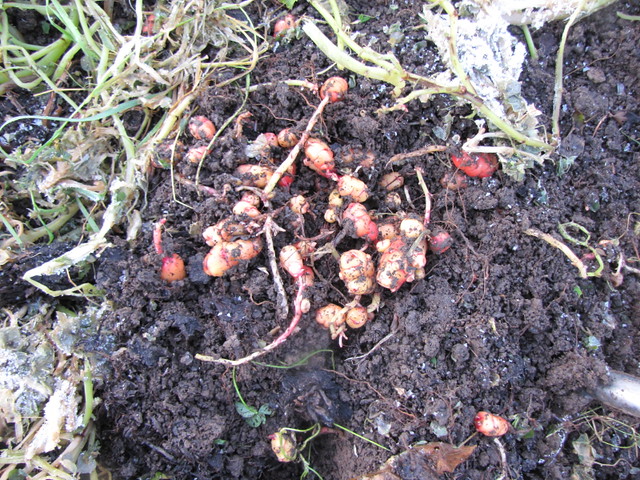
Oca Tubers by British Red, on Flickr
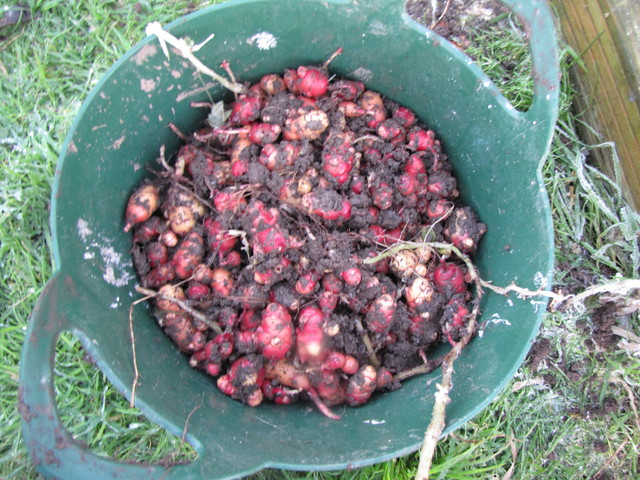
Lifted Oca by British Red, on Flickr
We washed the tubers and they cleaned up nicely.
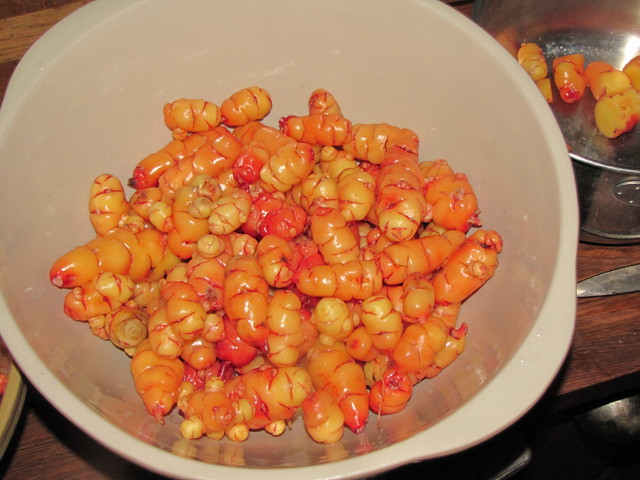
Washed Oca by British Red, on Flickr
Although not subject to blight, we noticed they are subject to wire worm - and those growing on the surface showed sign of a few being gnawed (rabbits or rats we suspect). These were discarded.
We tried the Oca boiled

Oca in Saucepan by British Red, on Flickr
It was interesting to note the colour faded in boiling
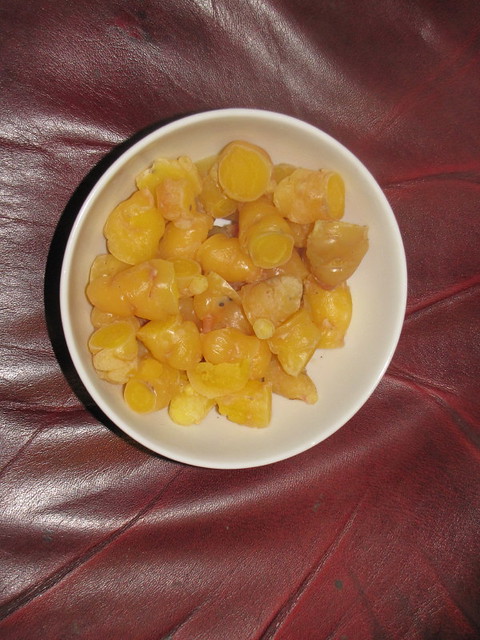
Boiled Oca by British Red, on Flickr
Taste - like a boiled fresh new potato. Not much of the claimed lemon taste - but...something....nice though
We also roasted some of the boiled tubers
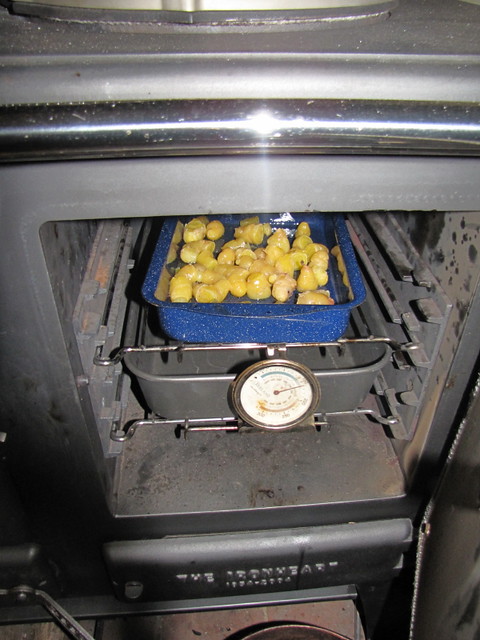
Oca in Esse by British Red, on Flickr
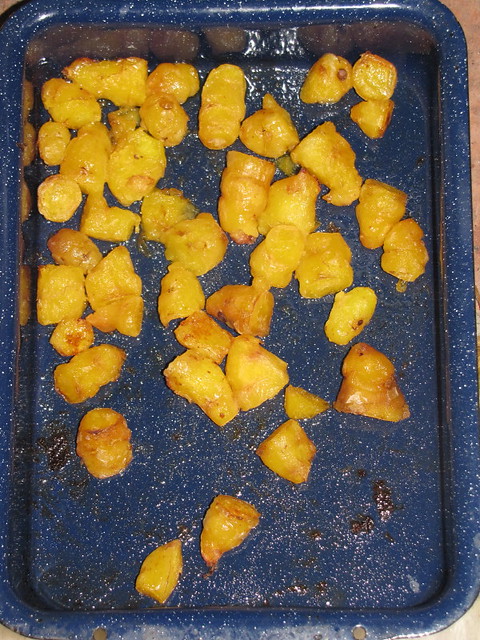
Roast Oca by British Red, on Flickr
Ended up like a soft roast new potato - I would only blanche them prior to roasting next time.
So...what do we think?
Well the best and largest of the tubers have been cleaned
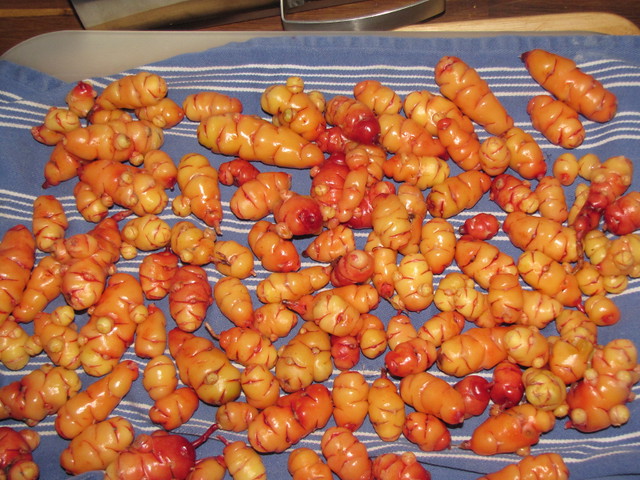
Seed Oca by British Red, on Flickr
and packed in dry straw ready for planting a large bed in the Spring
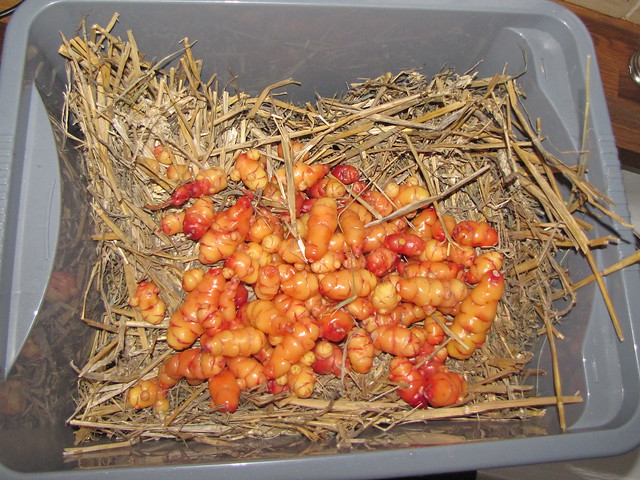
Seed Oca by British Red, on Flickr
Red
Wikipedia said:Oxalis tuberosa (Oxalidaceae) is a perennial herbaceous plant that overwinters as underground stem tubers. These tubers are known as oca, from the Quechua words okka, oqa, and uqa; New Zealand yam; and a number of other alternative names. The plant was brought into cultivation in the central and southern Andes for its tubers, which are used as a root vegetable. The plant is not known in the wild, but populations of wild Oxalis species that bear smaller tubers are known from four areas of the central Andean region.Oca was introduced to Europe in 1830 as a competitor to the potato and to New Zealand as early as 1860. In New Zealand, oca has become a popular table vegetable and is simply called yam.
..why? Well apparently it crops like potatoes and is described as
realseeds.co.uk said:Oca is grown and used just like new potatoes, although they are smaller than potatoes. It has a lemony taste and is very easy to grow as long as you have a moderately long season. It is completely unrelated to potatoes and so of course not affected by blight.
One of the 'Lost Crops' of the Incas, this is one of the staples of people in Bolivia & Peru. A very easy crop to grow, with a taste just like potatoes with lemon sauce. No need to peel, just boil and serve with butter. Mmmmm.
And the lush green foliage with yellow flowers is actually rather pretty in its own right. Very few pests seem to like it, so its a real 'no work' crop.
Almost too good to be true isn't it? Yep! Its a good crop. But that crop that has no pests, needs no work and crops reliably and heavily is guarded by dragons and unicorns and the seed is only available by passining into Narnia!
So in March we ordered some tubers in red....

Red oca by British Red, on Flickr
and Orange

Orange Oca by British Red, on Flickr
These were chitted (sprouted) in seed trays in a cool dark shed and planted a foot apart when the risk of frost was past.

Planted oca by British Red, on Flickr
Three weeks later, the first growth showed

Oca first growth by British Red, on Flickr
a couple of weeks after that, leaves appeared...sort of clover / wood sorrel in appearance

Oca 22-4 by British Red, on Flickr
A month later....not much bigger!

Oca 25-05 by British Red, on Flickr
About June they got going

Oca PLants by British Red, on Flickr
And just kept growing - but never got above a foot tall...just bushier.

Oca November by British Red, on Flickr
The plant needs to be frost killed before harvesting as it pulls its growth back into the tubers. Our first hard frost was the last day of November. The plants need to be left for a fortnight after this.
Two weeks later - this was how they looked

Frosted Oca by British Red, on Flickr
The tubers are quite shallow and in soft, unfrozen soil can be lifted by hand. The tubers are quite prolific

Oca Tubers by British Red, on Flickr

Lifted Oca by British Red, on Flickr
We washed the tubers and they cleaned up nicely.

Washed Oca by British Red, on Flickr
Although not subject to blight, we noticed they are subject to wire worm - and those growing on the surface showed sign of a few being gnawed (rabbits or rats we suspect). These were discarded.
We tried the Oca boiled

Oca in Saucepan by British Red, on Flickr
It was interesting to note the colour faded in boiling

Boiled Oca by British Red, on Flickr
Taste - like a boiled fresh new potato. Not much of the claimed lemon taste - but...something....nice though
We also roasted some of the boiled tubers

Oca in Esse by British Red, on Flickr

Roast Oca by British Red, on Flickr
Ended up like a soft roast new potato - I would only blanche them prior to roasting next time.
So...what do we think?
Well the best and largest of the tubers have been cleaned

Seed Oca by British Red, on Flickr
and packed in dry straw ready for planting a large bed in the Spring

Seed Oca by British Red, on Flickr
Red
